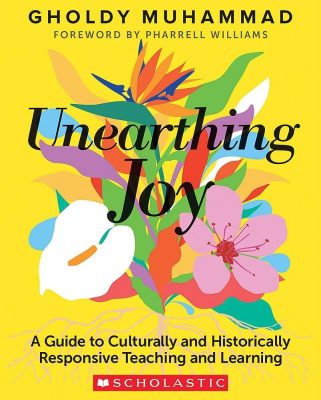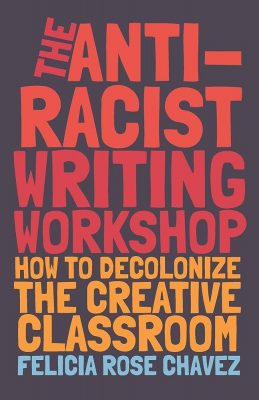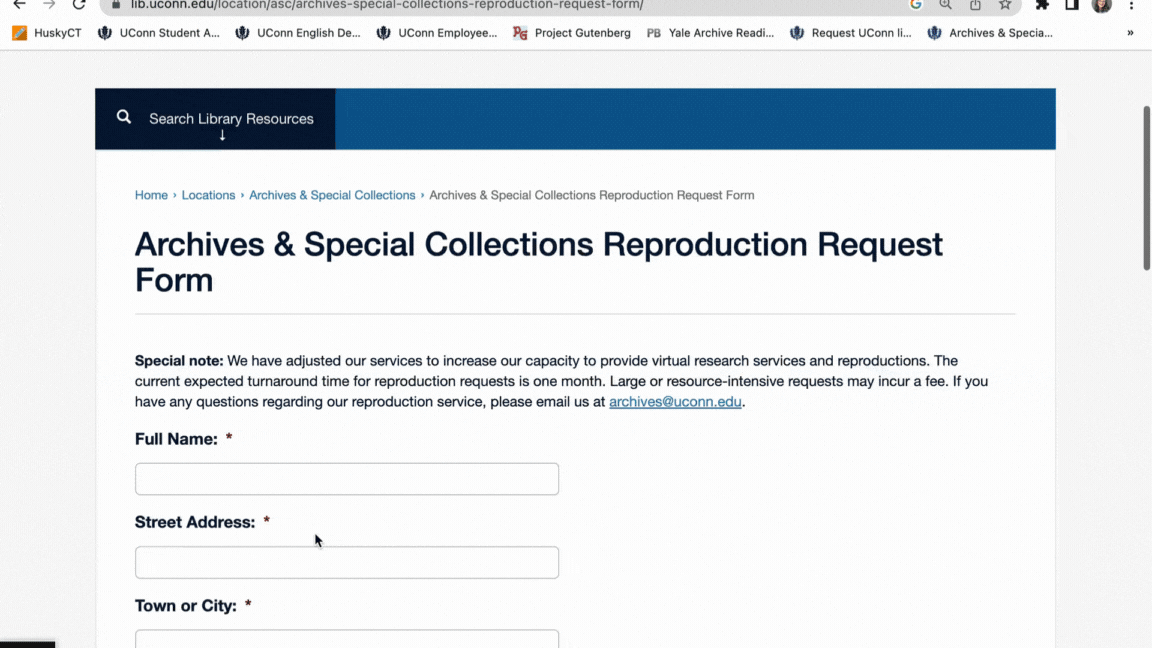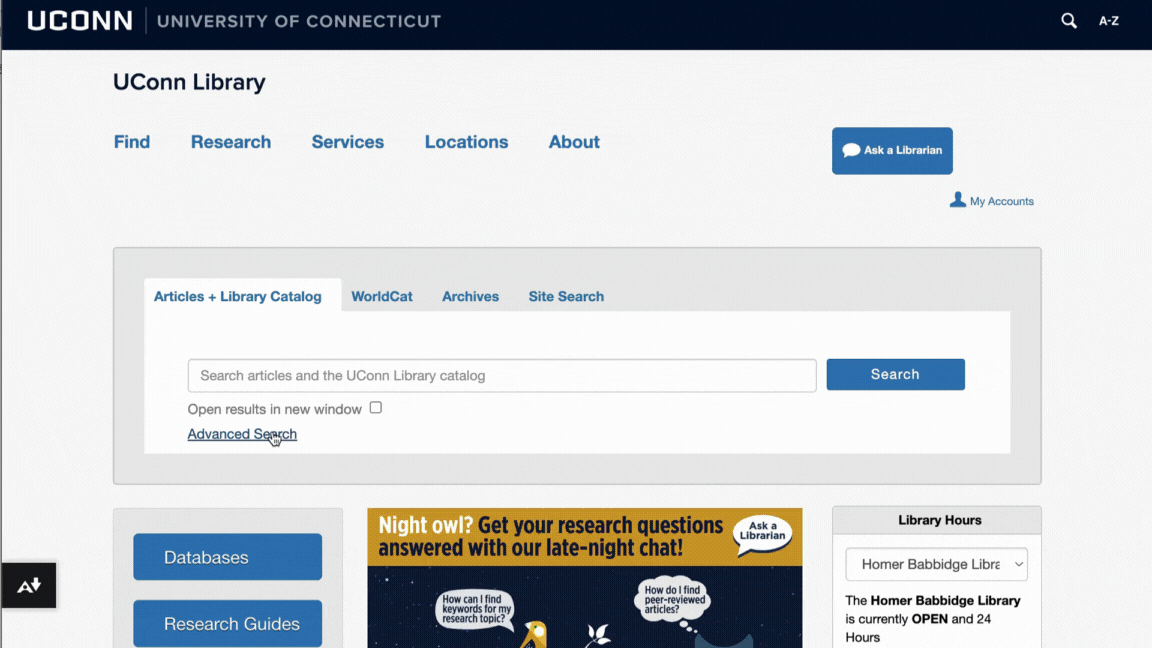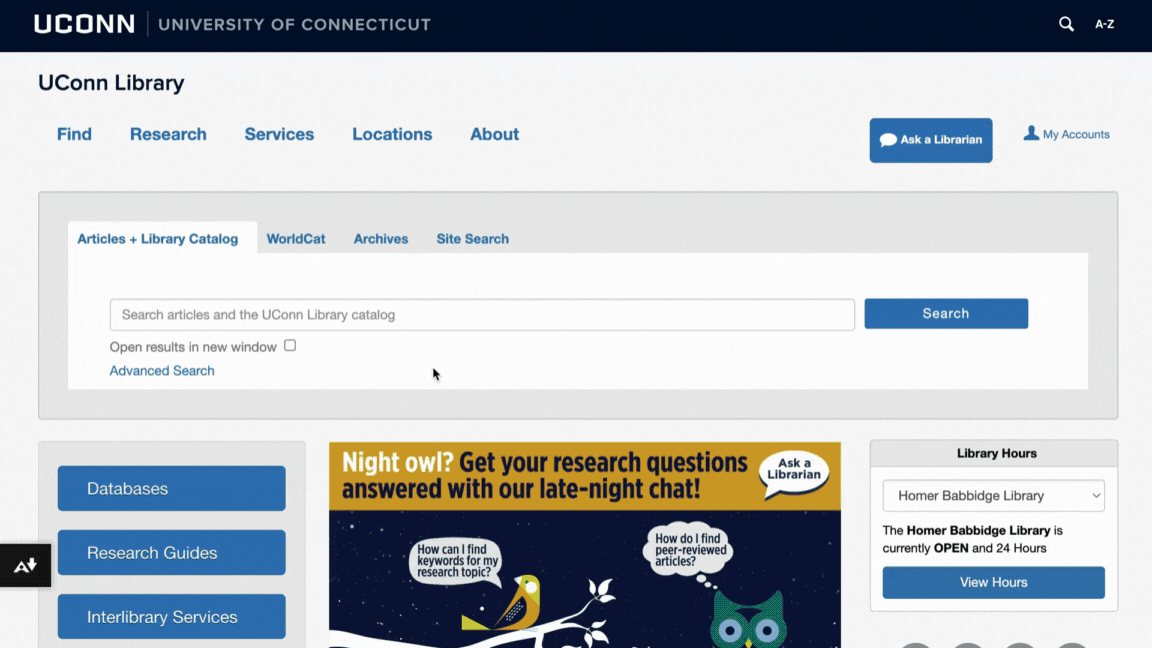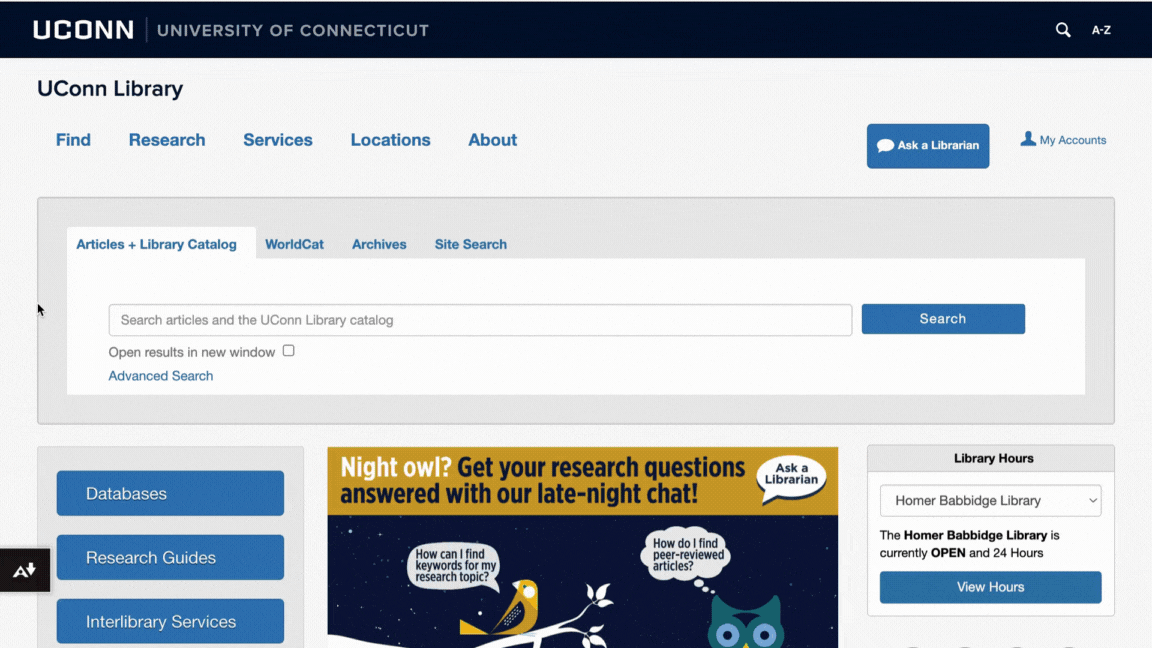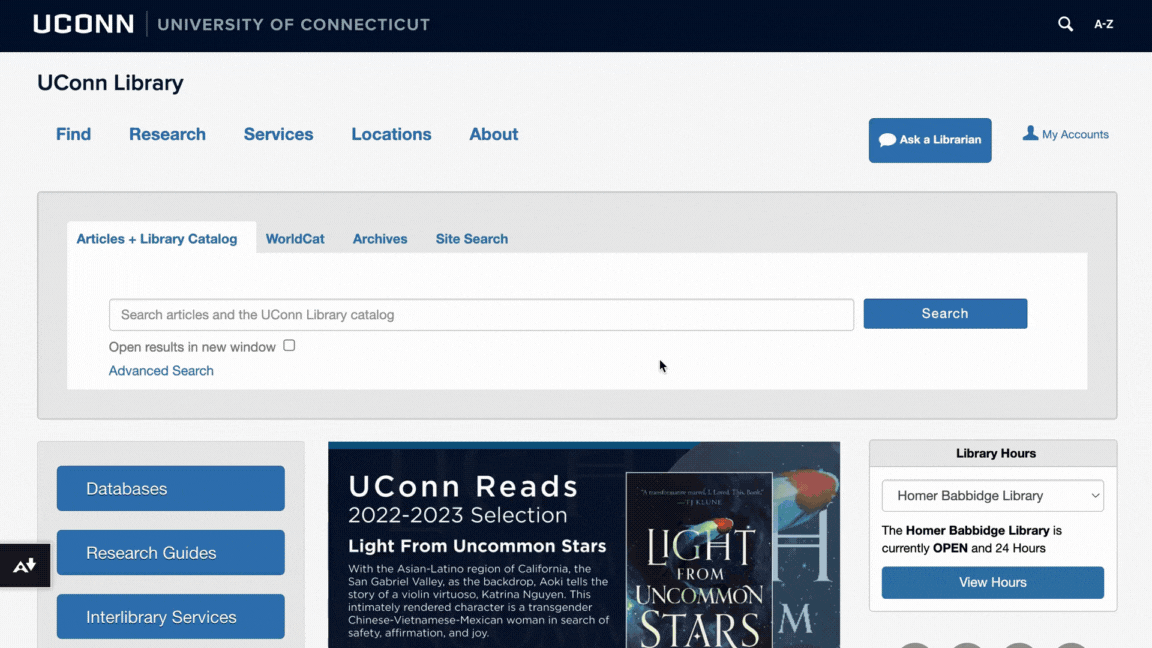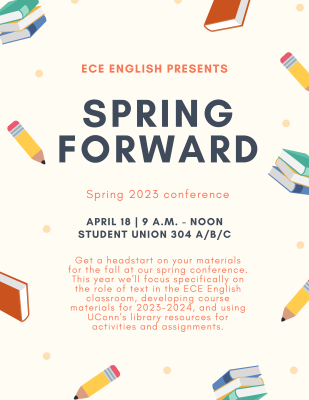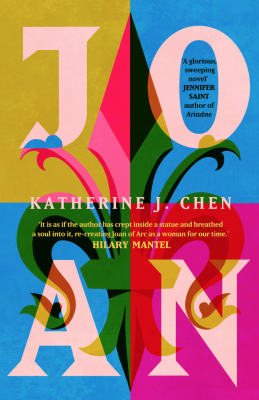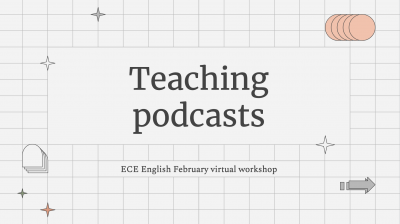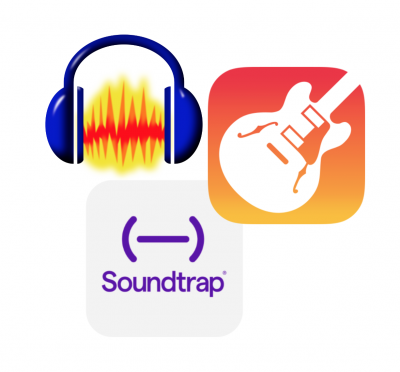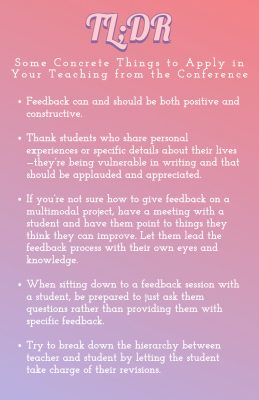
I really enjoyed sitting in a room with so many of you and feeling your enthusiasm and deduction to education. Because I am new to this position, I wanted to create a conference in which the experience in the room was shared between each teacher. There is so much knowledge within the many years of classroom teaching that combine when we all get together, and I hoped that in getting us to reflect, converse, and engage with each other, we were able—and continue to be able—to utilize and share that vast amount of wisdom.
For our Fall 2023 Conference, we had an animated conversation about feedback and how we provide it to students. The conference favored an egalitarian approach to learning about feedback, focusing on sharing with each other and then with the group different ideas for providing feedback within the first-year writing classroom.
Feedback is essential to the writing process, especially as we help to encourage and point new writers toward improving their writing craft and taking charge of their writing. Our course emphasizes writing as communication, and our feedback therefore models attentive, engaged reading. The conference was based on a think-pair-share methodology, with each workshop supporting reflective writing, pairing or grouping up, and then sharing with the entire collective. Many participants use feedback to support students questioning and interrogating their own work, conversing with students if a lot of feedback is needed, and coaxing out of students new ideas and approaches, especially while supporting and praising vulnerability in writing.
A core question we considered was how to give positive feedback that encourages students in a direction that can improve their writing rather than just correcting them into the right direction. Many teachers talked about their difficulty of remembering to provide positive and encouraging feedback to a paper, especially when the paper isn’t written that well. As we talked about how we might expand a paper that didn’t go into much personal detail, some of the participants reminded us to thank a student when they share or attempt to share something vulnerable or personal in their writing. I think this is a really great thing to engage in. When do we thank our students for taking time to work on their essays? When do we thank them for thinking through ideas that are difficult and sometimes personal? This approach of gratitude toward writing can be used to highlight good things done in an essay—a personal anecdote, an idea or method that is unique to the student, etc.—and thereby encourage that student to continue being personal in their writing. Putting attention on social, affective parts of writing can help students see writing as more than just a formal exercise.
We also collectively considered giving feedback to multimodal projects, something that I’ll continue to write on in these blog posts since the approach is still new to many and is multifaceted. How, we asked, do we assess and thereby give feedback to a project that isn’t in our wheelhouse, like a website, a podcast, or a digital creation? In our group conversation, we talked about focusing on the concrete aspects of writing, commenting on the creativity, developing rubrics that guide students, and engaging in conversations with our students. One of my favorite feedback suggestions was to just sit down with a student and ask them questions. Another response favored having the student ask questions of their own work, inviting them to point out what they think might not be the best or can be improved upon. This way of helping and supporting the student to become their own critic is helpful in developing them as a writer or creator without a classroom support system. And not everything needs to be assessed and quantified. We might worry less about how to “rank” multimodal projects and keep our focus on providing commentary, response, and reaction. What is this thing and how does it work?
Many teachers favor talking to students in one-on-one settings, but this feedback practice can be close to impossible with the large number of students and limited time that we have. Are there ways to provide feedback to the entire class or to converse with students who might not be the best at talking with others? One of the things I want to work on providing over the next few months is different methods of giving general feedback, the positives and negatives for this approach, and how to manage the large teaching amount that’s asked of us within our programs (even twenty students is a lot to give feedback to!). I don’t believe generalized feedback should be applied in every situation, but I want to dive into the research to provide some thoughts and methods that have been studied and disseminated in the scholarly community.
Because styles and methods of feedback vary so widely, we would love to hear from you about what you want and need from us. What would you like us to research, share, and consider with the entire community when it comes to pedagogy? Where do you need help in your classroom and your approach to first-year writing? Send us an email (eceenglish@uconn.edu) for your voice to be heard! I see my purpose as the graduate assistant to support you in your teaching by providing scholarship, ideas, and provocations in order to develop pedagogy and praxis.
If you haven’t turned in the materials for your course, please do so ASAP. You can turn them in using this form.
On The Write Space, Jason talks about international and first-gen students, discussing some cool cross-cultural activities he’s been engaged in and how teaching Phyllis Wheatley relates to these students.
TL;DR Concrete Things to Apply in Your Teaching from the Conference (Text of the Above Image)
- Feedback can and should be both positive and constructive.
- Thank students who share personal experiences or specific details about their lives—they’re being vulnerable in writing and that should be applauded and appreciated.
- If you’re not sure how to give feedback on a multimodal project, have a meeting with a student and have them point to things they think they can improve. Let them lead the feedback process with their own eyes and knowledge.
- When sitting down to a feedback session with a student, be prepared to just ask them questions rather than providing them with specific feedback.
- Try to break down the hierarchy between teacher and student by letting the student take charge of their revisions.
 A lot has happened in the last few years from pandemics to wars to disagreements to economic upheavals. Our students have lived through these events, surviving and, hopefully in some cases, thriving resiliently. How can we make our classrooms a space for optimistic inquiry through writing? How might we facilitate classrooms with positive critique and critical praise? How can we bring some joy and light through multimodality and studio pedagogy into the lives and experiences of our students? This conference builds on the work of Deonna Smith
A lot has happened in the last few years from pandemics to wars to disagreements to economic upheavals. Our students have lived through these events, surviving and, hopefully in some cases, thriving resiliently. How can we make our classrooms a space for optimistic inquiry through writing? How might we facilitate classrooms with positive critique and critical praise? How can we bring some joy and light through multimodality and studio pedagogy into the lives and experiences of our students? This conference builds on the work of Deonna Smith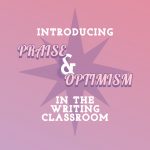
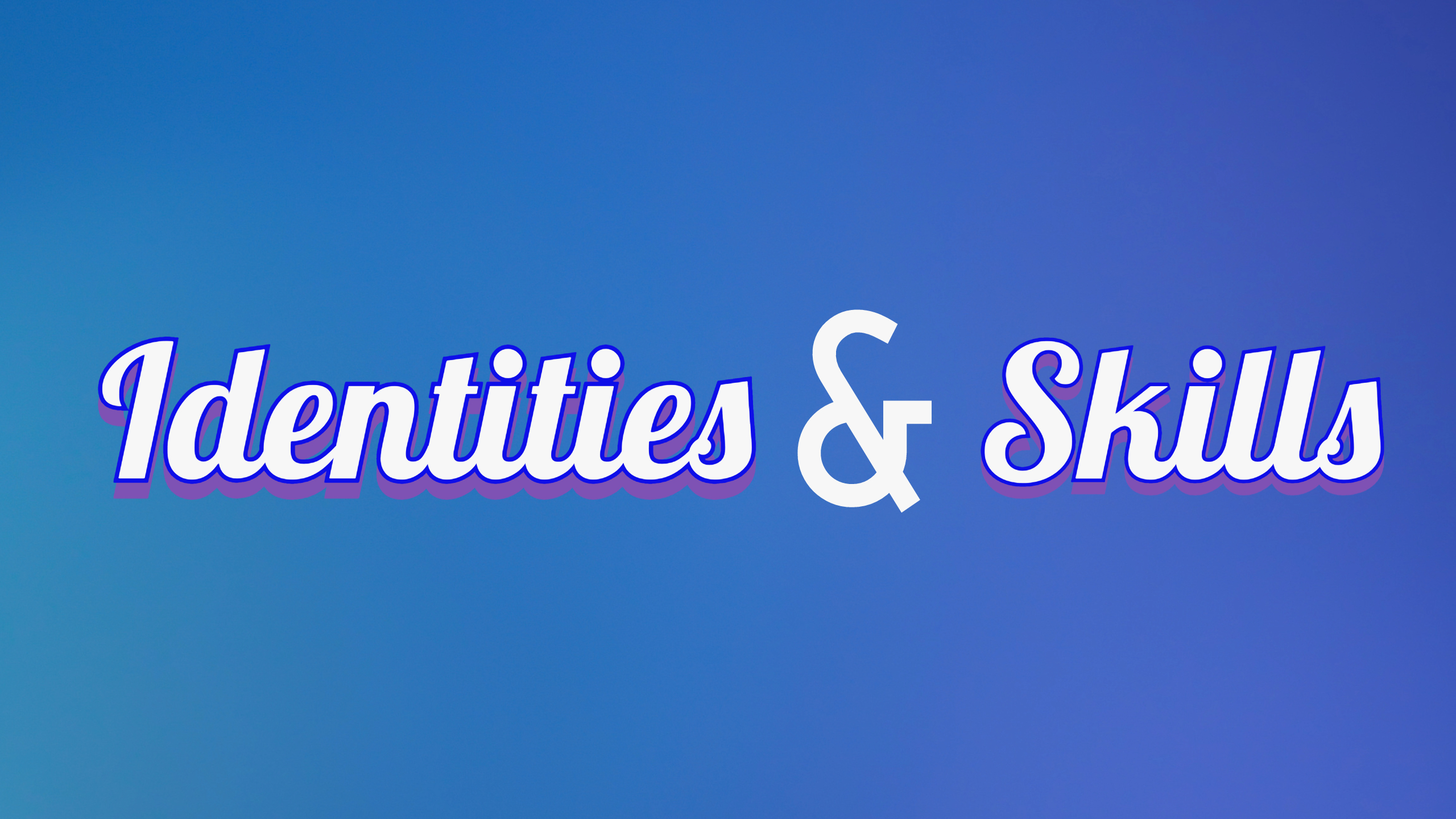
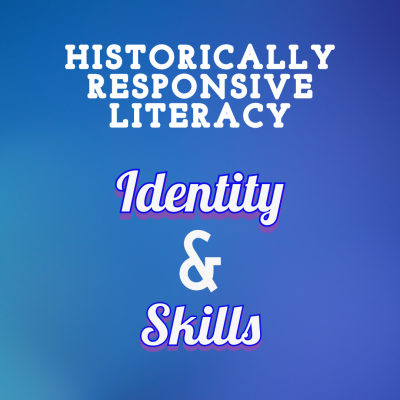 Gholdy Muhammad’s
Gholdy Muhammad’s 
